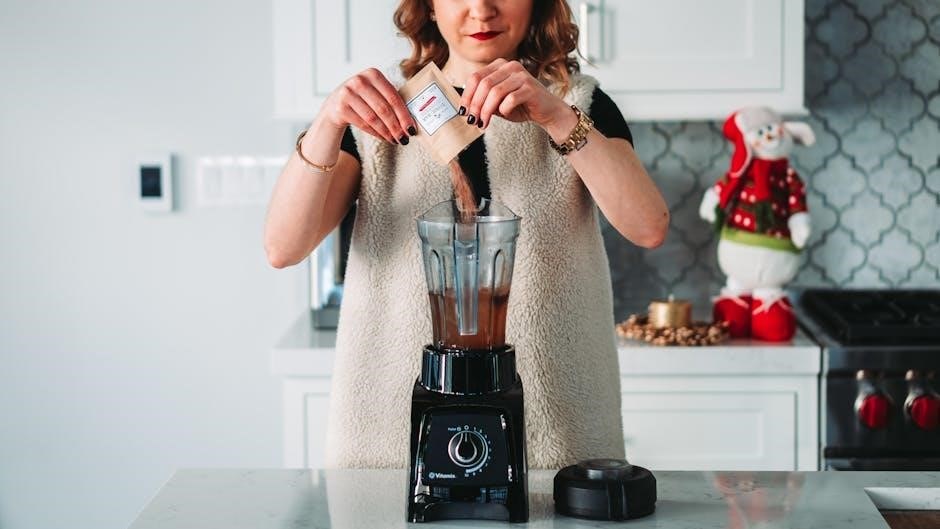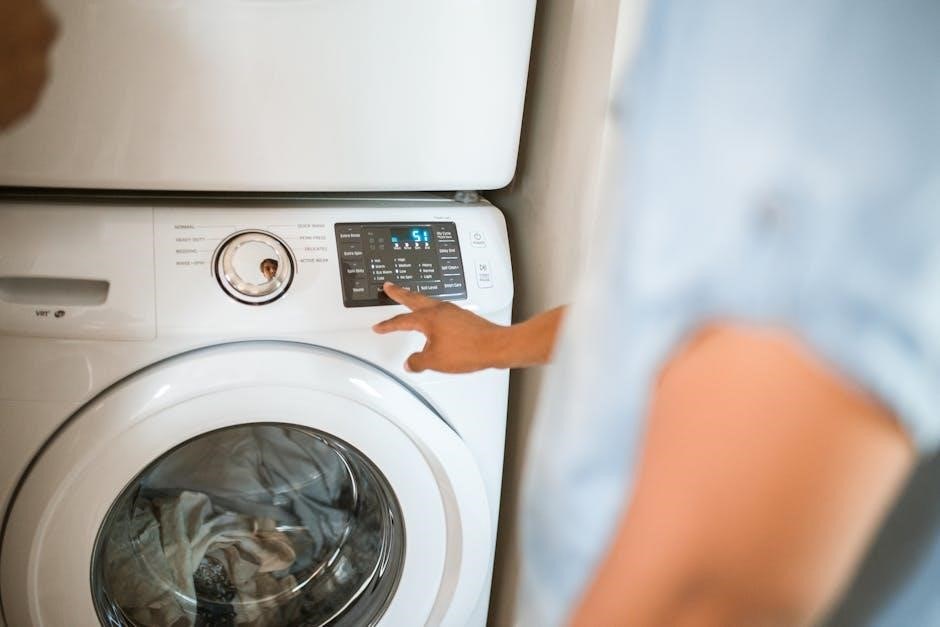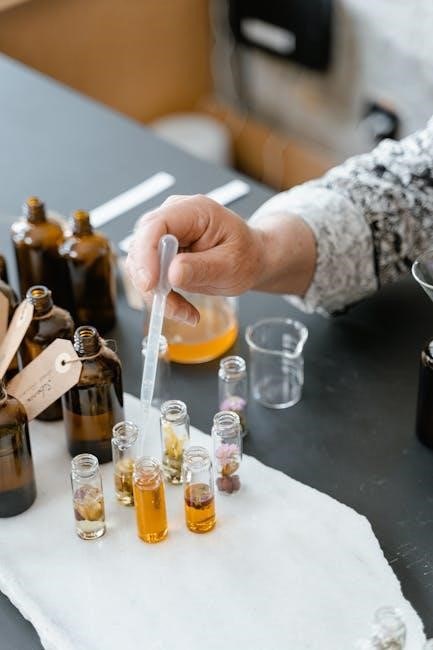bifen i t insecticide mixing instructions
Bifen I/T is a versatile insecticide containing bifenthrin‚ effective against various pests. It’s commonly used for turfgrass‚ perimeter treatments‚ and indoor applications. Always follow label instructions for safe and proper use.
1.1 Overview of Bifen I/T Insecticide
Bifen I/T is a broad-spectrum insecticide containing the active ingredient bifenthrin‚ a synthetic pyrethroid. It is widely used for controlling pests in turfgrass‚ gardens‚ and indoor/outdoor spaces. Bifen I/T works by disrupting the nervous system of insects‚ leading to paralysis and death. It is effective against a variety of pests‚ including spiders‚ ants‚ fleas‚ and ticks. The insecticide is available as a suspension concentrate‚ making it easy to mix with water for application. Bifen I/T is known for its quick knockdown and residual control‚ providing long-lasting protection. It can be applied as a surface spray or for soil penetration‚ depending on the target pest. Always follow the product label for specific usage rates and application guidelines to ensure safety and effectiveness. Proper mixing and application are crucial to achieve optimal results while minimizing environmental impact.
1.2 Common Uses of Bifen I/T
Bifen I/T is widely used for controlling pests in various settings‚ including residential lawns‚ gardens‚ and indoor areas. It is particularly effective for treating turfgrass to control insects like ants‚ fleas‚ and ticks. Many users apply it as a perimeter treatment to prevent pest entry into homes. The insecticide is also commonly used to target spiders‚ mosquitoes‚ and other pests in outdoor spaces. Its versatility allows it to be applied as a surface spray or mixed for soil penetration‚ ensuring thorough coverage. Bifen I/T is popular among homeowners and professionals due to its quick knockdown and long-lasting residual effects. It is also used in agricultural settings to protect crops from damaging insects. Regardless of the application‚ Bifen I/T is a reliable choice for managing a broad range of pest infestations‚ making it a staple in many pest control routines.

Mixing Instructions for Bifen I/T
For effective use‚ mix Bifen I/T with water at specified rates‚ typically 0.18–1.0 fl. oz. per gallon for turfgrass and 0.33 fl. oz. for perimeter applications. Always follow label instructions for proper dilution.
2.1 Materials Needed for Mixing
To properly mix Bifen I/T‚ you will need clean water‚ a mixing bucket‚ and a measuring utensil for accurate dilution. Protective gear such as gloves and safety goggles is recommended. For turfgrass applications‚ use 0.18–1.0 fl. oz. of Bifen I/T per gallon of water per 1‚000 sq. ft. For perimeter treatments‚ use 0.33 fl. oz. per gallon. Ensure the mixture is well-agitated before application. Always refer to the product label for specific dilution rates and guidelines. Properly calibrated spray equipment is essential for uniform coverage. Avoid mixing more than needed‚ as unused spray mixtures must be disposed of according to label instructions. If treating plants‚ mix Bifen I/T at 1/2 oz per gallon of water. For best results‚ apply the mixture promptly after preparation to maintain effectiveness. Follow all safety precautions to ensure safe handling and application.

2.2 General Mixing Guidelines
When mixing Bifen I/T‚ always follow the product label instructions for accurate dilution rates. Start by filling the mixing container with clean water‚ then gradually add the insecticide. Ensure thorough agitation to achieve a uniform mixture. For most applications‚ use 0.25–1.0 fl. oz. of Bifen I/T per gallon of water‚ adjusting based on pest severity and type. Avoid over-mixing‚ as this can lead to excessive chemical waste. For turfgrass‚ apply 0.18–1.0 fl. oz. per gallon per 1‚000 sq. ft.‚ while perimeter treatments require 0.33 fl. oz. per gallon. Always wear protective gear‚ including gloves and goggles‚ during the mixing process. Apply the mixture promptly after preparation to maintain effectiveness. If treating plants‚ mix at 1/2 oz per gallon of water. Ensure the spray equipment is properly calibrated for uniform coverage. Never mix more than needed‚ as unused spray mixtures must be disposed of according to label instructions. Proper mixing ensures safe and effective pest control.
2.3 Dilution Rates for Different Applications
For effective pest control‚ Bifen I/T requires precise dilution rates depending on the application. Here are the typical dilution rates:
- General Pest Control: Mix 0.25 to 1.0 fluid ounces of Bifen I/T per gallon of water.
- Turfgrass: Apply 0.18 to 1.0 fluid ounces per gallon per 1‚000 square feet.
- Perimeter Treatments: Use 0.33 fluid ounces per gallon for optimal barrier control.
- Indoor Use: Dilute 0.5 fluid ounces per gallon of water for effective indoor pest management.
These rates may vary based on pest severity and specific treatment requirements. Always refer to the product label for precise instructions and adjust dilution rates accordingly to ensure safety and efficacy.
2.4 Mixing Bifen I/T with Water
Properly mixing Bifen I/T with water ensures effective pest control and prevents uneven application. Start by filling the spray tank with water to about half its capacity. Add the recommended amount of Bifen I/T insecticide‚ ensuring the product is fully incorporated into the water. Agitate the mixture thoroughly to create a uniform solution. Once mixed‚ fill the tank to the desired level and agitate again to maintain consistency. Allow the mixture to sit for a few minutes before use to ensure complete dissolution. When mixing‚ always follow the label instructions for the correct dosage and water volume. Proper mixing ensures optimal performance and minimizes the risk of clogged spray equipment. For best results‚ mix Bifen I/T just before application and avoid storing pre-mixed solutions for extended periods.
Application Guidelines
Bifen I/T should be applied evenly to targeted areas‚ ensuring thorough coverage for optimal pest control. Always follow label instructions for surface sprays‚ perimeter treatments‚ and turfgrass applications. Adjust techniques for indoor or outdoor use.
3.1 Surface Spray Applications
For effective surface spray applications‚ mix Bifen I/T according to label instructions and apply evenly using a low-pressure sprayer. Aim for thorough coverage of targeted surfaces‚ such as walls‚ floors‚ and vegetation. Avoid spraying during direct sunlight or high winds to minimize drift. For optimal results‚ apply in the early morning or late evening when pests are most active. Ensure the solution is evenly distributed to avoid over-application‚ which can lead to runoff or waste. Always maintain a safe distance from water sources to prevent contamination. After application‚ allow the solution to dry completely before re-entering treated areas. Repeat as needed based on pest activity‚ but not more frequently than recommended to avoid residues. Proper surface spray techniques ensure effective pest control while minimizing environmental impact. Follow all safety guidelines and label recommendations for best outcomes. This method is particularly effective for controlling crawling insects and surface-dwelling pests.
3.2 Perimeter Applications

Perimeter applications with Bifen I/T are essential for creating a barrier against pests entering buildings or outdoor spaces. Mix the insecticide according to the label’s instructions for perimeter use‚ typically ranging from 0.5 to 1 ounce per gallon of water. Apply the solution evenly along the foundation‚ windows‚ doors‚ and other entry points. For outdoor perimeters‚ spray 3 feet up and 3 feet out from the structure to ensure comprehensive coverage. Avoid spraying directly into flowers or gardens to protect pollinators. Apply the solution every 30 to 60 days‚ depending on pest pressure and weather conditions. Reapply after heavy rainfall to maintain effectiveness. When treating large areas‚ use a high-volume sprayer to ensure uniform coverage. Always follow safety guidelines and avoid drifting onto non-target areas. Perimeter treatments are highly effective for preventing crawling insects‚ spiders‚ and other pests from infiltrating protected zones. Regular applications help maintain long-term pest control.
3.3 Turfgrass Application Rates
For turfgrass applications‚ Bifen I/T is typically mixed at a rate of 0.5 to 1.5 ounces per gallon of water‚ depending on the severity of the pest infestation. This concentration is effective for controlling insects such as white grubs‚ chinch bugs‚ and billbugs. When treating larger areas‚ the application rate can be adjusted to 1 to 3 fluid ounces per 1‚000 square feet. It’s important to ensure uniform coverage by using a sprayer that delivers 2 gallons of solution per 1‚000 square feet. Apply the mixture evenly across the turf‚ avoiding over-application‚ which can harm the grass. For severe infestations‚ the higher end of the rate may be necessary‚ but never exceed the maximum labeled rate. Reapplication may be needed every 30 days‚ depending on pest activity and environmental conditions. Always follow the product label for specific guidance tailored to your region and turf type. Proper application ensures effective pest control while maintaining turf health.
3.4 Indoor and Outdoor Use Tips

When using Bifen I/T indoors‚ focus on areas where pests are most active‚ such as cracks‚ crevices‚ and baseboards. Avoid spraying directly on countertops or surfaces where food is prepared. For outdoor applications‚ target the perimeter of buildings‚ gardens‚ and landscaping features. Spray shrubs‚ trees‚ and other hiding places for pests. Always avoid applying Bifen I/T on blooming plants to protect pollinators. For both indoor and outdoor use‚ test a small area first to ensure no staining or discoloration occurs. Reapply as needed‚ but do not exceed the recommended frequency to prevent chemical buildup. Use a coarse spray nozzle for outdoor treatments to cover larger areas efficiently. Indoors‚ use a fine mist setting to penetrate tight spaces. Proper timing‚ such as early morning or late evening‚ helps minimize exposure to beneficial insects and ensures better pest control. Follow all label instructions to maximize effectiveness and safety.
Safety Precautions
Always wear protective gloves‚ eyewear‚ and a mask when handling Bifen I/T. Avoid skin contact and inhalation of spray mist. Keep the product away from children and pets. Follow label instructions carefully to ensure safe use and avoid overexposure.
4.1 Personal Protective Equipment (PPE)
When mixing or applying Bifen I/T Insecticide‚ it is crucial to wear appropriate PPE to minimize exposure risks. This includes long-sleeved shirts‚ long pants‚ closed-toe shoes‚ and chemical-resistant gloves made from materials like nitrile or rubber. Additionally‚ wear protective eyewear such as goggles or safety glasses with a splash guard to prevent eye contact. A dust/mist respirator is also recommended to avoid inhaling aerosols or spray mists. Ensure all clothing and PPE are clean and free from pesticides. Avoid wearing leather goods‚ as they can absorb chemicals and be difficult to decontaminate. After use‚ wash reusable PPE thoroughly with soap and water‚ and launder clothing separately from other items. Properly dispose of any single-use PPE to prevent cross-contamination. Always prioritize PPE use to safeguard your health and ensure safe handling of the insecticide.
4.2 Safe Handling Practices
Safe handling practices are essential when working with Bifen I/T Insecticide to minimize risks to humans‚ animals‚ and the environment. Always avoid direct contact with the product‚ as it can cause skin irritation or other health issues. Use clean‚ properly calibrated equipment for mixing and application to ensure accuracy and prevent overuse. Never eat‚ drink‚ or smoke while handling pesticides‚ and wash hands thoroughly before and after use. In case of spills‚ contain the material immediately using absorbent materials like sand or sawdust‚ and dispose of it according to local regulations. Keep the product away from food‚ water sources‚ and areas where children or pets may access it. Regularly inspect equipment for leaks or damage to prevent accidental exposure. By following these practices‚ you can reduce potential hazards and ensure the safe‚ effective use of Bifen I/T Insecticide.

Environmental Considerations

Environmental considerations are crucial when using Bifen I/T. Avoid contamination of waterways‚ soil‚ and air. Ensure proper disposal and follow all regulations to protect ecosystems and wildlife from pesticide exposure risks.
5.1 Preventing Environmental Contamination
Preventing environmental contamination is essential when using Bifen I/T insecticide. Always avoid spraying near waterways‚ drains‚ or areas where runoff may occur‚ as this can harm aquatic life. Keep the product away from soil and vegetation to prevent unintended absorption. Properly dispose of empty containers and unused product according to local regulations to minimize soil and groundwater contamination. Avoid applying Bifen I/T during windy or rainy conditions‚ as this increases the risk of drift or runoff. Use protective equipment to prevent skin contact‚ which can indirectly reduce the risk of environmental exposure. Store the insecticide in its original container‚ tightly sealed‚ and in a well-ventilated area to prevent accidental spills. Clean up spills immediately using absorbent materials like sand or sawdust‚ and dispose of them properly. Follow all label instructions to ensure responsible use and minimize ecological impact.

5.2 Protecting Pollinators and Wildlife
Protecting pollinators and wildlife is crucial when using Bifen I/T insecticide‚ as it can be toxic to bees and other beneficial insects. Avoid spraying plants during blooming periods when pollinators are most active. Refrain from applying the product near bee hives‚ bird feeders‚ or wildlife habitats to minimize exposure. Do not spray on or near water sources‚ such as ponds or bird baths‚ as this can harm aquatic life and other animals. To reduce drift‚ avoid spraying during windy conditions. Keep pets and wildlife away from treated areas until the product has dried completely. Always follow label instructions to ensure proper dosage‚ as over-application can increase the risk of harming non-target species. By taking these precautions‚ you can help protect pollinators and wildlife while effectively managing pests with Bifen I/T insecticide.

Disposal and Storage
Store Bifen I/T in its original container‚ away from heat sources and children. Dispose of unused product and containers according to local regulations. Do not reuse containers for other purposes.
6.1 Proper Disposal of Pesticide Waste
Proper disposal of Bifen I/T insecticide waste is essential to prevent environmental contamination. Always follow local‚ state‚ and federal regulations regarding pesticide disposal. Do not pour leftover product down drains or storm sewers‚ as this can harm aquatic life. If you have unused or partially used insecticide‚ contact your local waste management agency for guidance on designated collection facilities. Ensure the product is stored in its original container with the label intact until disposal. Empty containers should be thoroughly rinsed and wrapped securely before being placed in the trash. Never reuse pesticide containers for other purposes. If you spill or overapply the product‚ absorb the excess with absorbent materials like sand or kitty litter and dispose of them according to local guidelines. Proper disposal helps protect the environment and ensures compliance with safety regulations.
6.2 Storage Requirements for Bifen I/T
Proper storage of Bifen I/T insecticide is crucial for maintaining its effectiveness and ensuring safety. Store the product in a cool‚ dry‚ well-ventilated area away from direct sunlight and heat sources. The ideal storage temperature is between 40°F and 90°F (4°C and 32°C). Keep the container tightly sealed and in an upright position to prevent leakage. Store the product in its original packaging to retain labeling information. Avoid storing near food‚ water sources‚ or living areas. Ensure the storage area is inaccessible to children‚ pets‚ and unauthorized individuals. Do not store in areas prone to flooding or moisture accumulation. Always check the expiration date and condition of the product before use. If the container is damaged or leaking‚ handle it with care and dispose of it according to local regulations. Proper storage helps maintain the product’s potency and prevents potential hazards.
Troubleshooting Common Issues

Common issues with Bifen I/T include incorrect mixing ratios and insufficient coverage. Always double-check measurements and ensure thorough application. address these by recalibrating equipment and reapplying as needed for optimal results.
7.1 Incorrect Mixing Ratios
Incorrect mixing ratios are a common issue when using Bifen I/T insecticide. If too little product is mixed‚ it may not effectively control pests‚ while excessive amounts can harm plants or the environment. To avoid this‚ always follow the recommended dilution rates on the product label. Measure the product accurately using a calibrated measuring device‚ and mix it with the appropriate amount of water. If you notice uneven pest control or plant damage after application‚ it could indicate an incorrect mix. To fix this‚ remeasure the product and water ratio‚ and reapply the solution as needed. Proper mixing ensures safety‚ efficacy‚ and environmental protection. Always double-check your calculations before application to prevent this issue.
7.2 Insufficient Application Coverage
Insufficient application coverage is another common issue when using Bifen I/T insecticide. This occurs when the product is not applied evenly or thoroughly to the target area‚ leading to incomplete pest control. To address this‚ ensure your spray equipment is calibrated to deliver the correct volume of solution per area. Use a sprayer with a fine nozzle to achieve uniform coverage‚ especially for large or irregularly shaped areas. Divide the application area into smaller sections to maintain consistency and avoid missing spots. Additionally‚ avoid applying the product in windy or rainy conditions‚ as this can reduce coverage and efficacy. Reapply the product if necessary‚ but always adhere to the recommended application rates and intervals specified on the label. Proper application technique is critical to achieving effective pest management and preventing reinfestation. By ensuring thorough coverage‚ you maximize the product’s performance and safety.

